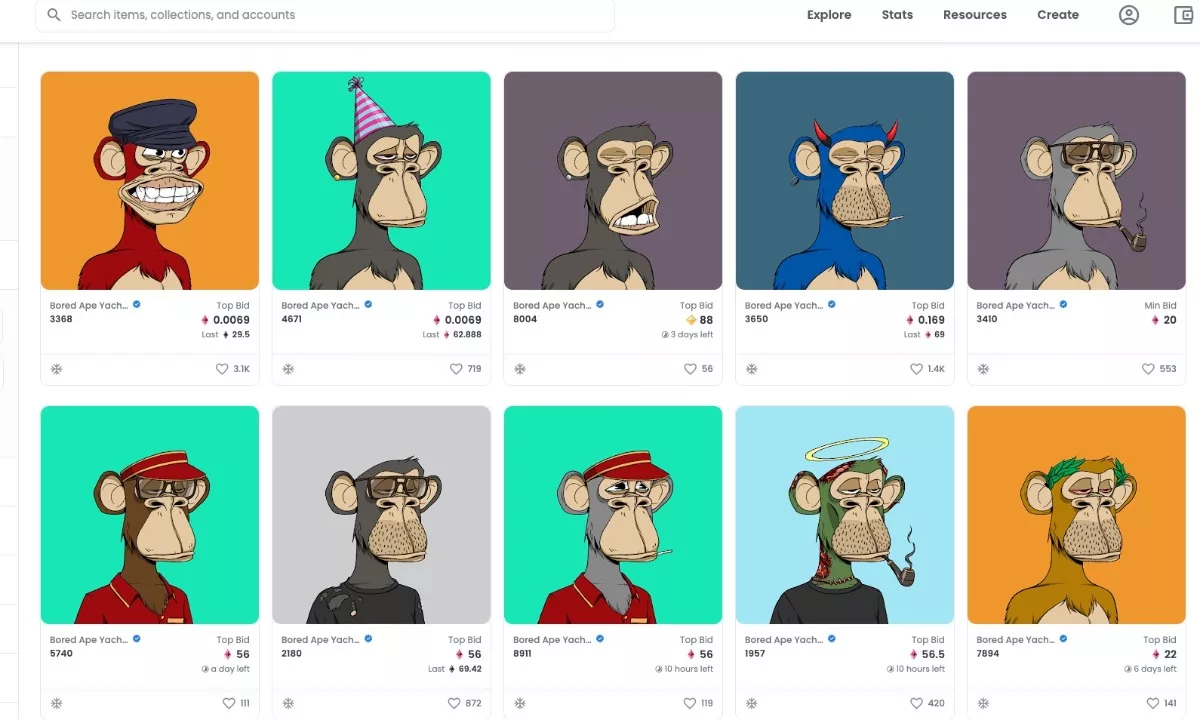Role of Blockchain Analytics Platforms in Analyzing the Threats to NFTs

Do you know how many blockchain analytics companies exist? Take a wild guess.
At least a few hundred. And everyone is working to bring more transparency to the web3 ecosystem.
Blockchain analytics is the process of analyzing, identifying and grouping data on the blockchain and presenting it in meaningful, actionable, usable information. In addition, blockchain analytics also models and represents data to identify important information about users and transactions.
Blockchain data analytics platforms can provide data for different purposes. An increasing use of blockchain analytics is about the NFT data being transacted. This can include variables such as volume, market capitalization, sales, trades and many more. NFTs have gained a lot of attention and momentum in recent years, and every company in the world, regardless of industry, is experimenting with them and launching a new collection. Statista has a graph of the total value of sales involving a non-fungible token (NFT) in the art segment worldwide in the last 30 days from April 15, 2021 to November 15, 2022. This is just an example of how big NFT -the industry is such that it doesn’t even cover all categories other than art.
Companies like Nike, Prada in the fashion industry have embraced NFTs. It has even made inroads into real life events such as F1 racing, the FIFA World Cup and major sporting events around the world. Not to be left out of having a piece of this pie, blockchains have been busy adding NFT capabilities to them. Solana was a late entrant but has really gained some amazing market share already. With all this momentum, things may look very good for the NFT ecosystem, but there are some bad actors indulging in malpractice and foul play.
NFTs are plagued with security issues and threats such as plagiarism, wash trading, copy minting, fraud, scams and cyber attacks such as phishing, hacking and many more. A few of them require better use of hardware and software, a few require more caution on the internet, and other issues may require NFT data analysis to make better judgments. Threats such as washtrading where NFT creators engage in fake transactions to artificially inflate the prices of NFTs, copying where someone who is not the original creator of the NFT infringes the IP (intellectual property) of the creator by making fake copies of it original NFT work , or other methods of price manipulation where the fair price of an NFT is masked and traders and buyers end up paying exorbitant prices are all instances of NFT threats that can be detected with reasonable accuracy using AI/ML on the data obtained from the blockchains.
We are seeing an increase in the efforts of the web3 ecosystem stakeholders who are effectively addressing the threats and devising new methods to address any concerns that may negatively impact the NFT transaction experience. But this is all the beginning of a long road where ecosystem stakeholders have started a cat-and-mouse game to catch up with the fraudsters and scammers who regularly come up with new techniques to create threats against NFTs. The positive steps are a sign of maturity of the ecosystem and blockchain analytics platforms will play a bigger role in helping NFT marketplaces, lending protocols, traders, artists, buyers and sellers and everyone involved to better combat the threats.
The few cases where these data platforms can help right now are laundry trade detection, fair price estimation and counterfeit detection. A wash-traded NFT chart provided by bitsCrunch report shows over $140 million in wash-traded volume across three major blockchains over the past 30 days. These NFTs were possibly sold at much higher prices than their actual value, resulting in buyers and traders being defrauded. This projects a negative image of NFT to buyers and investors, and the entire ecosystem will be at a loss in the long term.
Fair pricing of NFTs will also be possible if washed and fictitious transactions are easily identifiable and separated from the total number of transactions. Also, counterfeit detection can be done by giving some kind of tick to the original creation (verified mark) so that any further copies made can be easily identified. Similarly, methods to find duplicate/counterfeit NFTs should be developed so that they can be easily removed automatically or at least the original creator is informed and they can take action to remove the counterfeit NFTs from other marketplaces.
As more data is collected, new use cases will emerge to combat the threats even more effectively. As they say “knowledge is power” and what the best blockchain analytics platforms can do is provide the knowledge to businesses and individuals so they can achieve better transparency. It is a relatively new technology and just like any other technology, there are pros and cons in the NFT ecosystem as well. There are people and businesses with malicious intent ready to take advantage of loopholes and the lack of global or national standards and regulations. While the government agencies look to figure it out, until then blockchain analytics platforms will play a crucial role in self-governance and self-developed combat systems against the threats to the NFTs.
Analyzing threats is a good start, but we will soon see a plethora of new age blockchain data analytics platforms that will go even further by allowing you to take actions based on that data and work as “custodians of the NFT ecosystem”. The blockchain analytics platforms will continue to evolve and provide us with newer security measures against existing and future NFT threats. The innovation in the space is encouraging and we hope to see many more positive developments and new use cases of NFTs with increasing confidence in robust threat mitigation methods.
Disclaimer
The views above are the author’s own.
END OF ARTICLE























